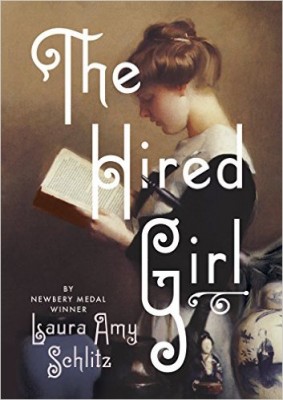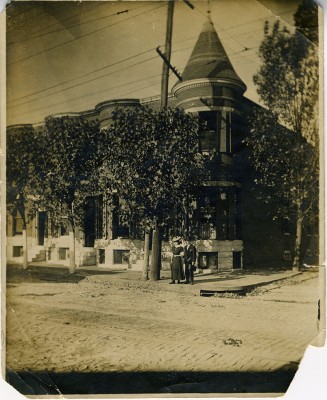A slice of Baltimore life, 1910-1911
A blog post by Collections Manager Joanna Church. To read more posts by Joanna click HERE.
I don’t normally walk around telling everyone about the last book I read, but this one seems appropriate for a mention here: The Hired Girl by Laura Amy Schlitz. It’s an historical fiction young adult novel about a servant who works in Baltimore, which means it might as well have “ATTN: JOANNA” on the cover. (Since it doesn’t, I’m glad Rachel, our dedicated social media content discoverer, posted about it on the JMM’s Facebook page for me.)
Book reviews are a bit out of our purview, perhaps, but for what it’s worth I very much enjoyed this story of Joan, an exuberant, open-hearted farm girl who winds up working as a housemaid for the Rosenbachs, a well-to-do Jewish family. I would have enjoyed it anyway – as previously mentioned, this kind of thing is right up my alley – but it was even better since, like the heroine, I too have been learning about Jewish Baltimore in the early 20th century. Though her characters are fictional, Schlitz (who teaches at the Park School) was careful to place them in the physical and social context of 1911 Baltimore; for example, the Rosenbachs own a department store, attend Har Sinai, and live on Eutaw Place. The author has said “I tried to make it as accurate as possible, but I took full advantage of the magical powers with which all storytellers are endowed” – in other words, ‘stop trying to find an exact match for everything, local historian!’ Nonetheless, every reference to the Phoenix Club or the Harmony Circle or even “Mr. Rosenbach’s friend the ophthalmologist”* gave me a happy moment of “Oh! That’s the thing that I just learned about,” and sent me to our database for images to help illustrate the world in which Joan and the Rosenbachs spent their days.
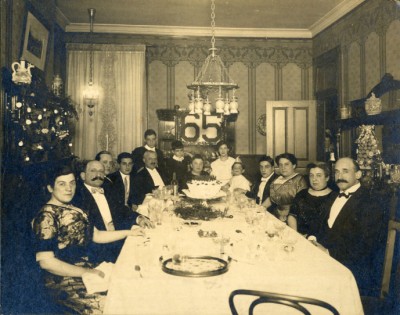
Hannah Mann’s 65th birthday celebration at the home of Joe Wiesenfeld, Eutaw Place, 1911. Donated by Joseph Wiesenfeld. JMM 1990.2.49
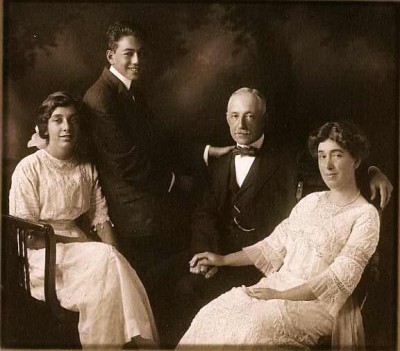
William and Beatrice Levy with their children, 1911. Donated by Janet Fishbein, Ellen Patz, Ruth Gottesman & Vera Mendelsohn Mittnick. JMM 2002.79.338
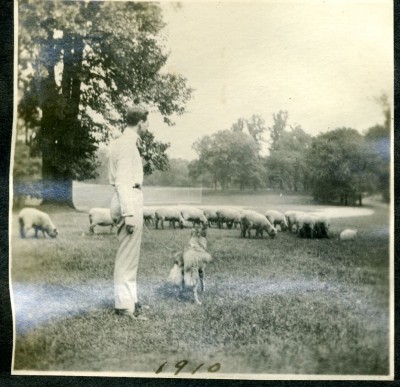
A member of the Weinberg family, with the family dog, in Druid Hill Park, 1910. (The park’s flock of sheep play a role in the book.) Donated by Jan L. Weinberg. JMM 1996.50.27k.6
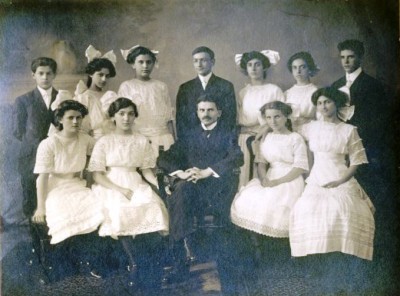
The Har Sinai confirmation class of 1911. (The book’s protagonist is glad to learn that the Rosenbach family’s laundry is sent out, so she won’t have to do more than iron; take a look at these nice white dresses and you’ll understand her relief!) Donated by Audrey Fox. JMM 1994.189.1
Interested in learning more about the book?
Here’s an interview with the author courtesy of the Jewish Book Council.
The Hired Girl recently won two awards for its portrayal of Jewish life: the Sydney Taylor Book Award, presented by the Association of Jewish Libraries, and the National Jewish Book Award (Young Adult), presented by the Jewish Book Council. On the other hand, it is also enjoying lively discussion online due to some negative descriptions of Native Americans; that debate is summarized (and presented with both links and opinions) by the editor of the Horn Book, and discussed more thoroughly at American Indians in Children’s Literature.
All in all, both the book itself and the response to its characters and themes are, I think, worth your time. And that’s your unofficial bookclub recommendation for February!
*I have convinced myself that this is a reference to Dr. Harry Friedenwald, though I suspect I’m too immersed in “Beyond Chicken Soup” preparations and am seeing Friedenwalds where none exist.

